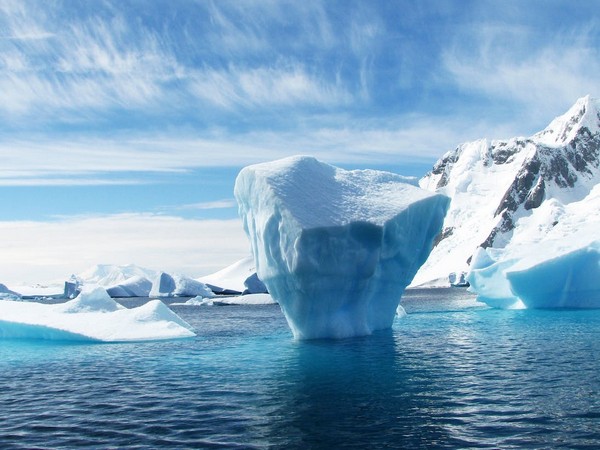

Sea levels are rising as a result of climate change due to ocean expansion and ice melting on land. Sea level rise in the near future will be influenced by a number of factors, some of which include how frequently glaciers”>glaciers calve. These happen when big chunks of ice break off from tidewater glaciers”>glaciers, or glaciers”>glaciers that finish in the ocean, and fall into coastal fjords as icebergs. The more ice enters the ocean as these glaciers”>glaciers move quicker across the land towards it, the faster the sea level rises.
The glaciers”>glaciers of Greenland may melt during the hotter summer months, creating sizable lakes that may eventually flow through to the glacier’s base. This lessens the friction between the ice and the ground, causing the ice to slide more quickly for a few days, according to studies on the interior Greenland ice sheet. However, it has not yet been determined whether such drainage episodes alter the tidewater glaciers”>glaciers’ flow rate, and thus, the frequency of calving events.
A research team from Columbia University, Oxford University, and the Oxford University Mathematical Institute used GPS observations of the flow speed of Helheim Glacier, the largest single-glacier contributing to sea level rise in Greenland, to look into this. The GPS recorded high-temporal-resolution observations of the glacier’s flow reaction to lake drainage, which were a nearly ideal natural experiment.
The Helheim Glacier was found to operate considerably different from the inland ice sheet, which moves quickly and downward during lake drainage events, according to the data. Helheim Glacier, in contrast, showed a relatively minor ‘pulse’ of movement, when the glacier accelerated for a brief period of time and subsequently slowed down, with no net increase in movement.
The researchers determined that this observation was most likely brought about by the Helheim glacier having an effective system of channels and cavities along its bed by using a computational model of the subglacial drainage system. As a result, the glacier bed can swiftly be cleared of draining fluids without increasing the overall net movement.
Although this seems to be good news for sea level rise implications, the researchers were concerned that glaciers”>glaciers without an effective drainage system, where the surface melt is currently low but may grow in the future owing to climate change, may see a different consequence (such as in Antarctica).
Based on the conditions of colder, Antarctic tidewater glaciers”>glaciers, they performed a mathematical model. The findings suggested that, in these circumstances, lake drainages would result in a net increase in glacier movement. This was primarily caused by the slower evacuation of flood waters via the less effective subglacial drainage system throughout the winter. However, no in-situ observations of Antarctic tidewater glacier responses to lake drainage have been made so far.
The research questions some conventional methods for determining glacial drainage patterns from glacier velocities measured through satellite images (which are currently used in sea level rise models).
“What we’ve observed here at Helheim is that you can have a big input of meltwater into the drainage system during a lake drainage event, but that melt input doesn’t result in an appreciable change in glacier speed when you average over the week of the drainage event,” said lead author Associate Professor Laura Stevens (Department of Earth Sciences, Oxford University).
Since the best temporal precision of currently known satellite-derived glacier speeds is only around one week, lake drainage events like the one seen in the Helheim GPS data are typically overlooked.
Associate Professor Stevens continued, “These tidewater glaciers”>glaciers are challenging.” Before we can safely predict how tidewater glaciers”>glaciers will react to future atmospheric and oceanic warming, we need to learn a lot more about how meltwater drainage functions and modifies tidewater glacier speeds.